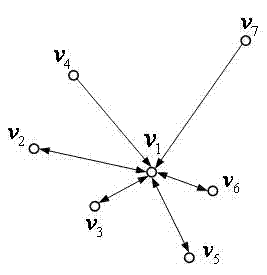Bidirectional neighborhood filtering policy based remote sensing image registration method
A remote sensing image and neighborhood technology, applied in the field of image processing, can solve the problems of reduced accuracy of matching methods, lack of stability, and difficulty in high-precision registration of image registration methods.
- Summary
- Abstract
- Description
- Claims
- Application Information
AI Technical Summary
Problems solved by technology
Method used
Image
Examples
Embodiment Construction
[0036] The present invention will be further described below in conjunction with the accompanying drawings and specific embodiments.
[0037] The invention proposes a remote sensing image registration method based on a two-way neighborhood filtering strategy, which is especially suitable for applications where large affine transformations exist between images to be registered, images to be registered are heterogeneous images, and similar patterns exist in image scenes. Condition. Such as figure 1 Shown is a flowchart of the specific implementation steps of the method. Such as Figure 3a~Figure 3c , Figure 4a~Figure 4e Shown is a specific embodiment of applying the method of the present invention to register remote sensing images A and B.
[0038] Step 1: Initialize matching point pairs.
[0039] (1) Read image A and image B to be registered from two image channels, and use the SIFT feature operator to extract SIFT feature points and 128-dimensional SIFT feature vectors o...
PUM
 Login to View More
Login to View More Abstract
Description
Claims
Application Information
 Login to View More
Login to View More - R&D
- Intellectual Property
- Life Sciences
- Materials
- Tech Scout
- Unparalleled Data Quality
- Higher Quality Content
- 60% Fewer Hallucinations
Browse by: Latest US Patents, China's latest patents, Technical Efficacy Thesaurus, Application Domain, Technology Topic, Popular Technical Reports.
© 2025 PatSnap. All rights reserved.Legal|Privacy policy|Modern Slavery Act Transparency Statement|Sitemap|About US| Contact US: help@patsnap.com



